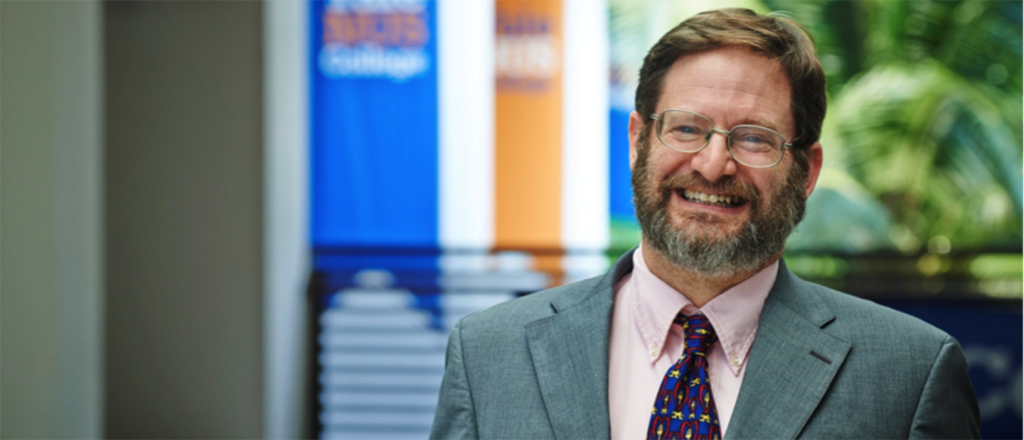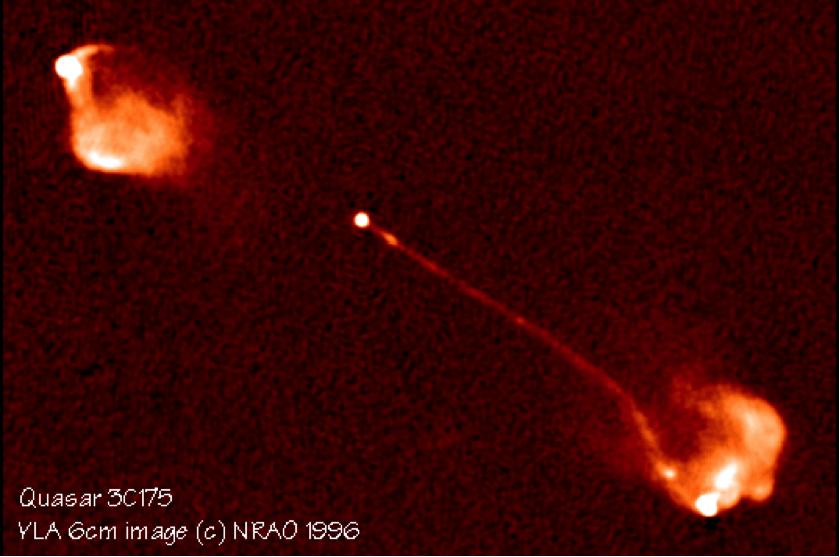What does a black hole look like?

Professor Charles Bailyn, the author of “What Does a Black Hole Look Like?” Image by CJ Sameer Wadhwa
Black holes have intrigued people for a long time. They are a place in space with such immense gravitational pull that even light cannot escape.
The enigmatic nature of black holes spurred Charles Bailyn, Yale-NUS College’s Dean of Faculty and Professor of Science to write “What Does a Black Hole Look Like?” which details how astronomers observe black holes and develop an understanding of how they function.
“The title of the book is oxymoronic,” notes Professor Bailyn. In fact, black holes cannot be seen since light cannot escape a black hole, so black holes actually “do not look like anything”.

Radio image of matter being ejected by a black hole in the middle of a distant galaxy traveling hundreds of thousands of light years before crashing into intergalactic gas. Image by US National Radio Astronomy Observatory (NRAO)
Professor Bailyn hopes the book will provide an introduction to the study of black holes from an observational point of view, rather than a theoretical perspective as most books do.
The main challenge was finding the right target audience and he eventually decided on individuals with A-level or college-level physics and undergraduate physics majors.
“The first draft of the book was very uneven,” shared Professor Bailyn, “Some chapters were much simpler than others so that had to be worked out.”
He added, “I had been working on and off on the book for a couple of years. I think my first discussions with the editors were 2010, around the same time I was starting to seriously think about coming to Singapore!”
Despite these challenges, Professor Bailyn’s book has won praise from fellow astronomers M. Coleman Miller and W. Niel Brandt from University of Maryland, College Park and Pennsylvania State University respectively.
Miller, a Professor of Astronomy applauded the book for being written in a “highly accessible style” that would help to “educate an undergraduate astronomy or physics major without going into the many details required in a graduate class.”
Some students from Professor Bailyn’s class had the opportunity to read his manuscript as part of his course on Black Holes.
Rohan Naidu (Class of 2017) said that Professor Bailyn’s book appealed to him as it differs from most books which treat black holes and their complexities at a mathematical level. Rohan added, “Most books speak of black holes in a language beyond what would be palatable to most undergraduate science students. This book however, retains the complexity and wonder surrounding black holes while simplifying that language.”
Echoing similar sentiments, Margaret Schumann (Class of 2017) said: “I liked how the book described black holes in an engaging and light-hearted manner without skimping on the science.”
“The book struck a good balance between the twin temptations of rigorous explanation and engaging description,” she added.
Earlier in 2009, Professor Bailyn’s work on measuring the masses of black holes was recognised with the Bruno Rossi Prize from the American Astronomical Society, an annual award given to individuals who demonstrate significant contributions to High Energy Astrophysics and who produce original work.
When asked about advice for aspiring astrophysicists, Professor Bailyn shared: “Get a solid background in math, physics, computing and statistics. These are the key skills that are required for research.”





